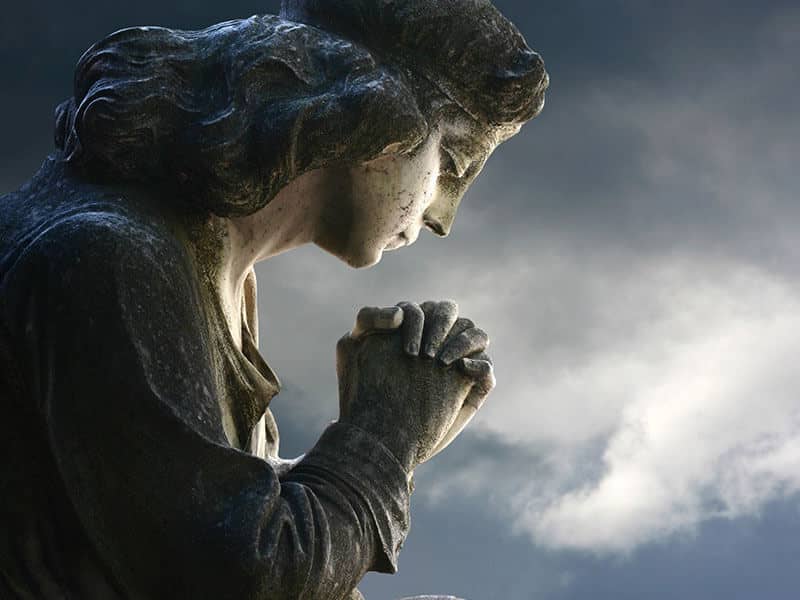Q: I am certain that I lived in a haunted house when I was 12. All of us--my parents, two sisters, and myself--at one time or another saw the ghost of an elderly woman in the upstairs hallway. Recently, when I was telling some friends about my having seen a ghost when I was a kid, one of them suggested that the ghostly woman might have been my spirit guide. Should I have tried to make contact with the ghost? What is the difference between ghosts and spirit guides, anyway?
A: We think it's a good thing that you did not attempt to contact the ghostly image of the elderly woman. Whether you actually saw the spirit of a deceased former resident of the home or merely an idea-form of the woman somehow impressed in the psychic ether of the house, it is likely that, because you were a child and very impressionable as children are, you could have become more fearful and prone to having entities hanging around you.
Five Ways to Identify a Ghost
The term "ghost" can mean different things to different people--none of which applies to the concept of a spirit guide. Here are some of the more recognized manifestations of the unknown that are called "ghosts":
1. Spirits of the Dead: Traditionally, these are earthbound spirits of the deceased who have been unable to quit their attachment to the people, places, or things of the physical world and have not yet progressed into the Light of a higher spiritual dimension.
2. Crisis Apparitions: In these cases, a ghostly image of a person known to the observer is seen when the individual is, in fact, elsewhere, undergoing a crisis or meeting his or her death. For example, a man in Detroit is sitting reading in his living room when he looks up to see his father standing in front of him. The image waves good-bye and fades away. Moments later, a telephone call informs the man that his father has just passed away in his home in Dallas.
3. Phantoms: Ghosts that habitually appear in a particular locale are known as phantoms. Numerous communities have their own traditional phantom, such as a ghostly hound that stands watch over a graveyard, a phantom nun that wanders near the ruins of an ancient convent, and, yes, phantom horsemen who guard old bridges. Interestingly, it seems that such phantoms are most often sighted around Halloween, when the mass psyche is directed toward thoughts of things that go bump in the night.
4. Poltergeists: The most disruptive of all haunting phenomena may not be the work of a nasty ghost, but explosions of psychic energy released by someone undergoing a highly stressful or severe psychological adjustment, such as puberty or marital upheaval. These "pelting" or "throwing" ghosts overturn furniture and send dishes, lamps, and other objects flying across rooms.5. Psychic Residue: Many ghostly manifestations contain no spirit entities of any kind but are merely the psychic residue left behind by powerful human emotions, such as hate, fear, or pain. Somehow, the psychic energies of those who once inhabited a place are impressed into the natural environment and may be seen by the psychically sensitive as if they were viewing images on a strip of motion picture film that keeps being shown over and over. People might be frightened when seeing such spooks, but they can't interact with such "ghosts" any more than one can interact with the images on a television screen.
So...What Are Spirit Guides?
When we refer to spirit guides in this column, we are speaking of the benevolent multidimensional beings who stand ready to be our helpers and our teachers. Many Native American shamans believe that when one sincerely desires to live a balanced life and serve Spirit, many helpers will manifest to assist on that pilgrim's earthwalk
When spiritualist mediums refer to their spirit guide, they are speaking of an entity who serves as their "control," a kind of spiritual interlocutor or intermediary who summons those spirits of the deceased who wish to give messages to their loved ones. The guide who works with the medium in this cooperative effort may have once been someone who lived on earth, or the entity may be a multidimensional being that has never expressed itself in human form.
For the traditional shaman, the guide serves as a gatekeeper between worlds, one who ushers the priest to the Other World in order to gain wisdom and insight that he will share with those who seek his counsel. The spirit guide may often take the form of a totem animal.
The idea of a spirit guide dates back to antiquity. Socrates provides us with the most notable example of an individual who received sage guidance from his daemon and who shared this wisdom with others. "Daemon" is not to be confused with "demon," though the two are often mistakenly equated. Actually, the former is better translated as a muse, source of inspiration, or guardian spirit. The great philosopher believed that his guiding spirit kept ceaseless vigil, warning him of approaching danger.
If a ghostly presence materializes in your proximity during this Halloween season, it would be best to assume that it is not your spirit guide and to proceed with caution. It is also best not to attempt communication. There are far too many tricksters out there, and they never leave treats.

